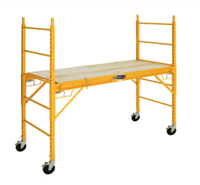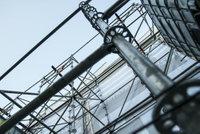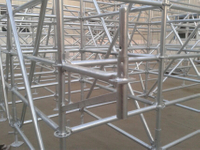Content Menu
● Introduction to Cuplock Scaffolding
● Key Components of Cuplock Scaffolding
● Materials Used in Cuplock Scaffolding
>> Steel Materials
>> Aluminum Materials
● Factors to Consider When Choosing Materials
>> Safety
>> Efficiency
>> Cost-Effectiveness
● Best Practices for Material Selection
● Conclusion
● FAQ
>> 1. What are the main components of a Cuplock scaffolding system?
>> 2. What types of steel are commonly used in Cuplock scaffolding?
>> 3. How does the Cuplock system ensure safety?
>> 4. What are the advantages of using aluminum in Cuplock scaffolding?
>> 5. How does galvanization affect Cuplock scaffolding materials?
● Citations:
Choosing the right material for a Cuplock scaffolding system is crucial for ensuring safety, efficiency, and cost-effectiveness in construction projects. The Cuplock system, known for its modular design and ease of assembly, is widely used in various construction applications, including building, shoring, and maintenance. This article will guide you through the process of selecting the best materials for your Cuplock scaffolding needs.
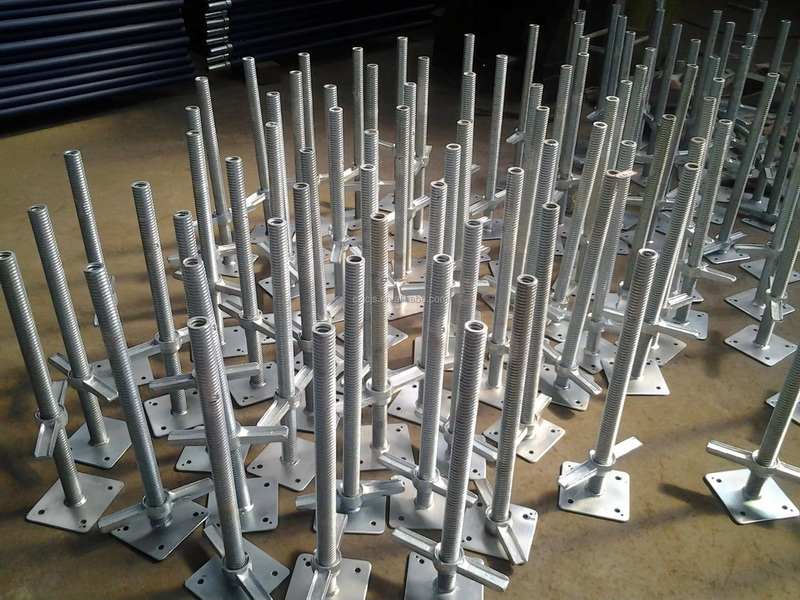
Introduction to Cuplock Scaffolding
The Cuplock scaffolding system is a multifunctional modular steel pipe scaffolding system originally designed by SGB. It features a unique node joint structure that allows for quick and easy erection, making it ideal for a wide range of construction projects, such as houses, bridges, tunnels, chimneys, and water towers[1][3].
Key Components of Cuplock Scaffolding
- Vertical Poles (Standards): These are the vertical parts of the scaffolding system, typically made from OD48.3mm steel pipes with top and bottom cups[4].
- Horizontal Ledgers: These connect the vertical standards, providing a framework for the scaffolding platform[10].
- Diagonal Braces: These ensure stability by connecting the standards diagonally[1].
- Forged Accessories (Top Cup and Ledger Blade): These are crucial for securing the ledgers to the standards[1].
Materials Used in Cuplock Scaffolding
The choice of material for Cuplock scaffolding is primarily between steel and aluminum, with steel being the most common due to its strength and durability.
Steel Materials
Steel is the preferred material for Cuplock scaffolding due to its high strength-to-weight ratio and resistance to corrosion when galvanized. The steel used is typically of high yield and tensile strength, such as S355 steel grade, which ensures a high load capacity[3][6].
Types of Steel Used:
- 3.2mm Thickness Material: Suitable for light-duty applications, offering a balance between weight and strength[3].
- 4.0mm Thickness Material: Ideal for heavy-duty applications where higher load-bearing capacity is required[6].
Aluminum Materials
Aluminum is lighter and easier to handle than steel, making it suitable for projects where weight is a concern. However, it is less commonly used due to its lower strength compared to steel[10].

Factors to Consider When Choosing Materials
When selecting materials for your Cuplock scaffolding system, several factors should be considered:
Safety
- Load Capacity: Ensure the material can support the required loads safely.
- Corrosion Resistance: Galvanized or hot-dip galvanized coatings are recommended for steel to enhance durability and safety[6][7].
Efficiency
- Ease of Assembly: Cuplock systems are known for their quick assembly and disassembly, but material quality can affect this process.
- Transportability: Lighter materials like aluminum may be easier to transport, but steel offers better durability[7].
Cost-Effectiveness
- Durability: High-quality materials may cost more initially but can reduce long-term costs by minimizing replacement needs.
- Maintenance: Materials that require less maintenance can save costs over time[9].
Best Practices for Material Selection
To ensure you choose the best material for your Cuplock scaffolding system, follow these best practices:
1. Assess Project Requirements: Determine the load-bearing needs and environmental conditions of your project.
2. Consider Material Properties: Evaluate the strength, durability, and corrosion resistance of potential materials.
3. Consult Suppliers: Discuss your needs with suppliers to ensure they can provide materials that meet your project's specifications.
Conclusion
Choosing the right material for a Cuplock scaffolding system is essential for ensuring the safety and efficiency of construction projects. Steel remains the preferred choice due to its strength and durability, but aluminum can be considered for lighter applications. By understanding the components, materials, and factors involved in selecting Cuplock scaffolding materials, you can make informed decisions that meet your project's needs.
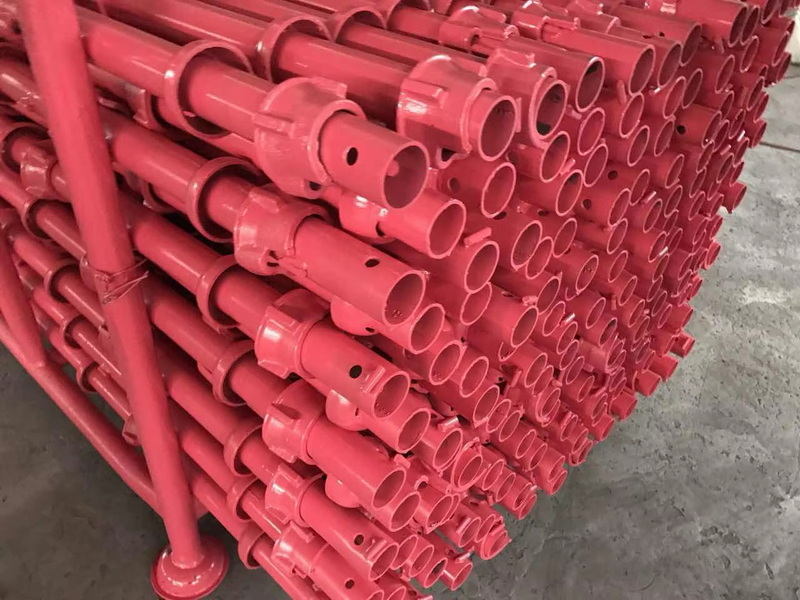
FAQ
1. What are the main components of a Cuplock scaffolding system?
The main components include Vertical Poles (Standards), Horizontal Ledgers, Diagonal Braces, and Forged Accessories like top cups and ledger blades[1][10].
2. What types of steel are commonly used in Cuplock scaffolding?
Common types include 3.2mm and 4.0mm thickness steel, with yield strengths of 235N/mm² or 355N/mm²[3][6].
3. How does the Cuplock system ensure safety?
The Cuplock system ensures safety through its unique node locking mechanism, which provides reliable bending, shearing, and torsion resistance without loose pins or bolts[3][9].
4. What are the advantages of using aluminum in Cuplock scaffolding?
Aluminum is lighter and easier to handle, making it suitable for projects where weight is a concern. However, it is less commonly used due to its lower strength compared to steel[10].
5. How does galvanization affect Cuplock scaffolding materials?
Galvanization, particularly hot-dip galvanizing, enhances the durability of steel scaffolding by providing a protective coating against corrosion, extending its working life[6][7].
Citations:
[1] https://www.durascf.com/cuplock-scaffolding-system/
[2] https://www.youtube.com/watch?v=fnJw0xLZE5s
[3] https://www.wm-scaffold.com/cup-lock-scaffold.html
[4] https://www.wm-scaffold.com/cuplock-scaffolding-standard.html
[5] https://www.youtube.com/watch?v=42kRVbNRFgY
[6] https://www.sparsteel.com/blog/cuplock-scaffolding-types-uses-and-benefits/
[7] https://www.internationalscaffolding.com/projects/what-is-a-cuplock-scaffolding-system/
[8] https://www.youtube.com/watch?v=2FbwLFj1aFY
[9] https://constrofacilitator.com/the-versatility-of-cuplock-scaffolding-systems-in-modern-construction/
[10] https://jumplyscaffolding.com/what-is-cuplock-scaffolding/













